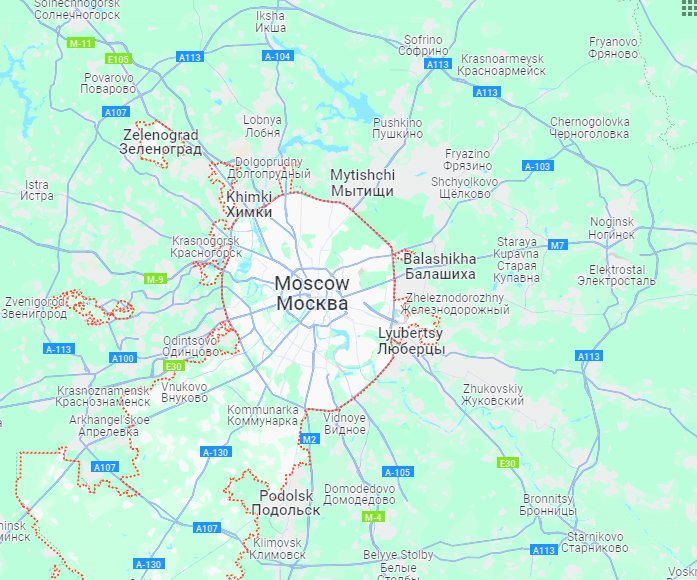Moscow (Russia) is located in the center of the East European Plain, between the Oka and Volga rivers, at the junction of the Smolensk-Moscow Upland (in the west), the Moskvoretsko-Okskaya Plain (in the east) and the Meshchera Lowlands (in the southeast), not far from the border of the forest and forest-steppe a natural zone that approaches the city from the southeast along the valley of the Moskva River. The city is located on the Russian plate, which is part of the East European platform. North and northeast of Moscow is the Moscow syneclise, which is the largest depression in the central part of the East European Platform. The territory of the city as of January 1, 2014, is 2561.5 km² and about a third of this area (878.7 km²) is inside the ring highway (MKAD).
The highest point is located on the Teplostanskaya Upland and is 255 m, and the lowest point is near the Besedinsky Bridges, where the Moscow River leaves the city (the height of this point above sea level is 114.2 m).
The city is in the middle of both banks of the Moscow River. In addition to this river, several dozen other rivers (tributaries of Moscow) flow through the city, the largest of which are Skhodnya, Khimka, Presnya, Neglinnaya, Yauza and Nishchenko (left tributaries), as well as Setun, Kotlovka and Gorodnya (right tributaries). There are many other reservoirs in Moscow: within the Moscow Ring Road, there are about 150 small rivers and streams, many of which flow in collectors, and about 240 open reservoirs (ponds and lakes).
A forest park belt surrounds the city and still preserves natural vegetation. Here pine forests grow on sandy soddy-podzolic soils and peat bogs are also found.
The features of the Moscow relief are largely due to active human activity: over many centuries, the local population has made changes to the surrounding nature, as evidenced by the presence of the so-called cultural layer that reaches 10-20 meters and consists of recycled soil and the remains of old foundations and pavements.
How to get to?
From Paris: 31 hr (2,850 km) via M1
From Toulouse: 37 hr (3,452 km) via M1
From Andorra: 39 hr (3,637 km) via M1
From Barcelona: 38 hr (3,611 km) via M1
From Madrid: 42 hr (4,117 km) via M1
From Monaco: 34 hr (3,075 km) via M1
From Belgrade: 25 hr (2,207 km) via M1
From Istanbul: 32 hr (2,406 km) via E101
From Bern: 30 hr (2,702 km) via M1
Moscow travel guide
Rivers, embankments and bridges
Theaters, concert hall and entertainment











